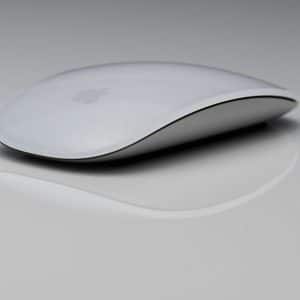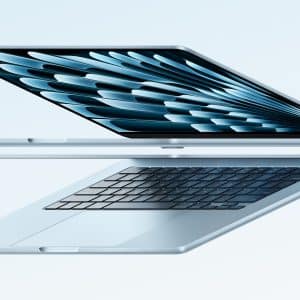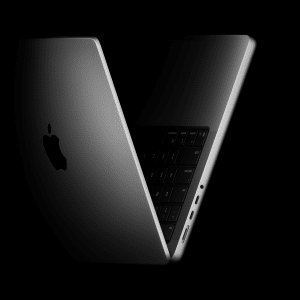Apple changed the game for the Mac when it announced the M1 chip in 2020, and since the launch of the first MacBook Pro and Mac mini, we’ve come a long way.
Alongside the launch of the M1 Pro and the M1 Max, we’ve recently seen the launch of the first M1-powered iPad, and the M1 Ultra, which offers professional computing performance for the next generation of videographers, coders, and professionals. The M1 was built on the architecture of the A14 chip used for the iPad and iPhone, doubling the performance of the CPU cores, GPU cores, and memory bandwidth to make them compatible with the next-generation of Mac devices.
In early benchmarks, the M1 outperformed virtually every Intel-based Mac ever made, even the Mac Pro, and Apple has used the power of the new chip to refresh its entire Mac lineup, recently introducing an all-new MacBook Air, and previously an overhauled iMac desktop. In short, M1 changed the way both consumers and professionals thought about the Mac, with some technology critics suggesting that the M1 chip “saved Apple’s computing lineup.”
It’s been more than a year and a half since the launch of the first M1 computer, and now it’s time for Apple to lift the lid on what’s next. It’s unlikely that we’ll see a new M-series chip every year as we do with the iPhone; instead, an 18- to 24-month M-series refresh cycle will be introduced to help Apple keep its Mac range at the top of its game.
Appearing first in the new MacBook Air and 13-inch MacBook Pro is the M2 chip – if the M1 was the A14, the M2 is the A15 chip. It’s made from billion transistors, 25 percent more than M1, and though it still uses the same 5nm manufacturing process as its predecessor, it features an “enhanced” process that’s designed to increase performance. Apple says that the M2 doubles the high-performance CPU cores from the A15, for an eight-core setup of four high-performance cores and four high-efficiency cores, and with a shared L2 cache increasing from 12MB to 16MB, clock speeds will likely go a little higher on the M2. The efficiency cores on the new chip have the same cache as the M1 but have been given other architectural improvements, which helps give the M2 an 18% greater CPU performance than the M1, putting the chip on par with a Ryzen 7 3800X desktop CPU, but with around 20% of its power consumption.
With the M2 chip, Apple has doubled the GPU cores from the A15, so it’s available with up to 10 GPU cores, though the entry-level device has only 8 GPU cores enabled. By having 25% more GPU cores, it could be argued that you’d expect 25% better performance, but the truth is that most graphics performance tasks are limited by memory bandwidth. That’s where M2 really comes into its own: Apple says its GPU performance is up to 35 percent better than M1, though power consumption has increased as a result. In its marketing material for the new chip, Apple says that the M2 is 2.3 times faster than the Intel Core i7-1255U at the same power level, and early Geekbench data would suggest that this is the case, though the i7-12700KF and i9-11900K just beat it with a single-core score of 1872 and 1878 respectively, compared to the M2’s 1869.
Though the M2 can be easily compared to the A15 chip, the transition from M1 to M2 does not work in the same way as the transition from A14 to A15 when it comes to the memory subsystem. The A14 and A15 have the same main memory subsystem specs: a 64-bit wide LPDDR4x interface. The M1 doubled that to 128 bits wide and stuck with LPDDR4x, for a peak of 68.25GB/s, whereas the M2 makes jumps to LPDDR5x, which boosts memory bandwidth to 100GB/s. This gives us some idea of where Apple could be headed when it launches the M2 Pro and M2 Max chips in 2023 – they might hold 50 percent more memory bandwidth than the M1 Pro and Max, clocking in at 400GB/s and 800GB/s respectively, which could blow any other processor out of the water and make the Mac users’ first choice.
The new M2 chip indeed features more CPU, GPU, and RAM than the M1 chip, but it’s all of the system-on-chip features combined that really make the new M2 special. The Neural Engine, for example, features 16 cores and can now perform up to 15.8 trillion operations per second, up from 11 trillion on the M1, whilst the media engine has been upgraded and supports H.264 and HEVC encoding and decoding up to 8K resolution and includes the ProRes video acceleration support. It’s also been reported that advanced video editing is possible on these entry-level MacBook Air models, which is truly revolutionary and makes the M2 chip a truly exceptional piece of engineering.
When Apple does eventually get around to adding the M2 to its more advanced machines, like the Mac Pro and MacBook Pro, we’ll likely see some impressive rendering benchmarks that save users lots of time. Of course, the transition from Intel to M1 is much more dramatic than the transition from M1 to M2, but the features and enhancements are still useful. What will perhaps be most interesting is to see Apple’s evolution towards the M2 Pro, M2 Max, and M2 Ultra chips, and where the firm could be headed beyond that. Apple’s already been teasing the launch of a new Mac Pro, likely to be released this year, alongside refreshed MacBook Pro models.
Are you looking forward to getting your hands on an M2 chip? Let us know!







